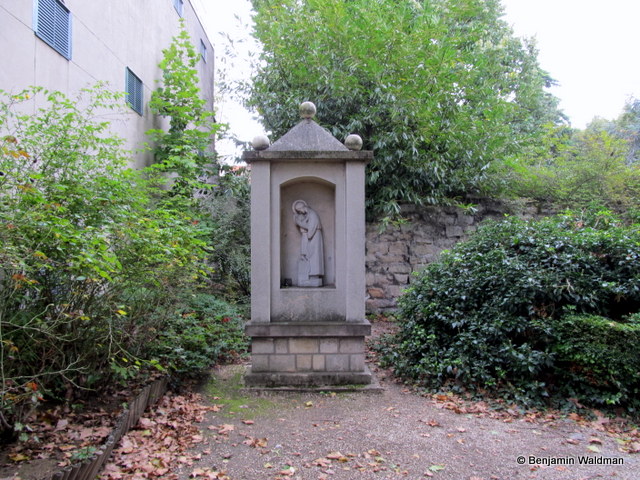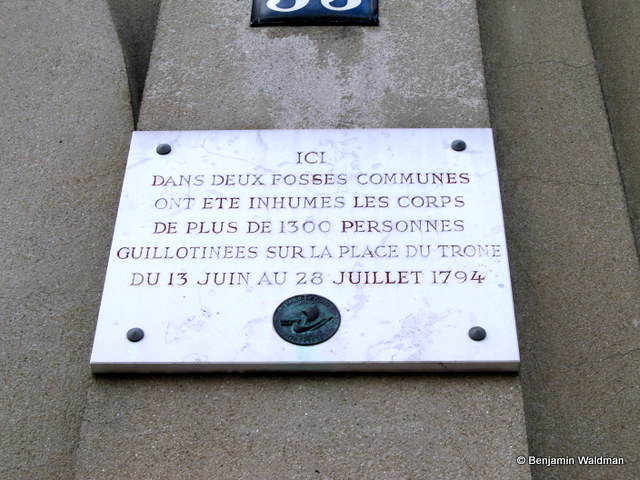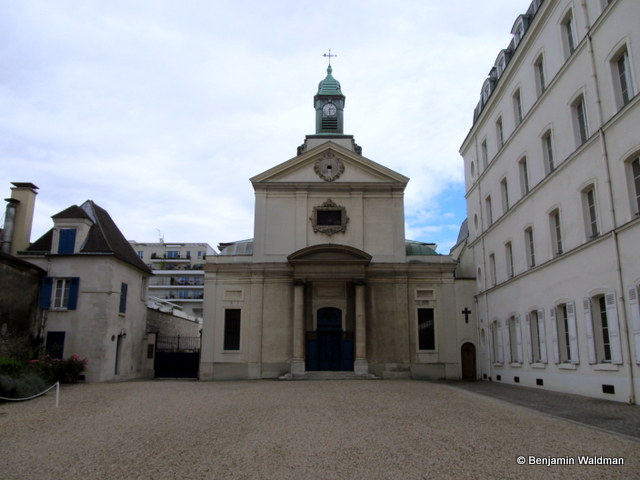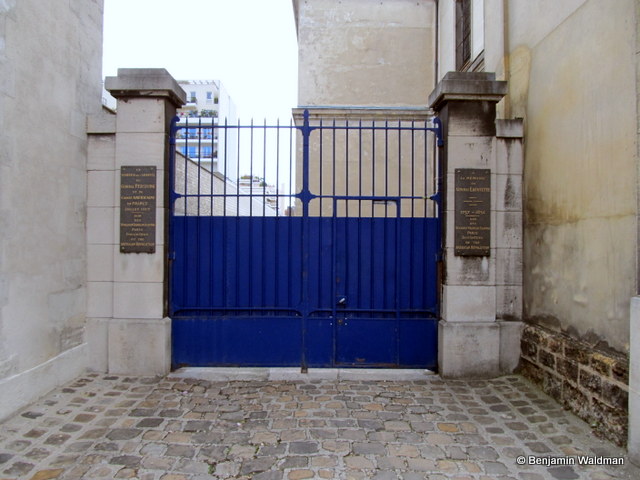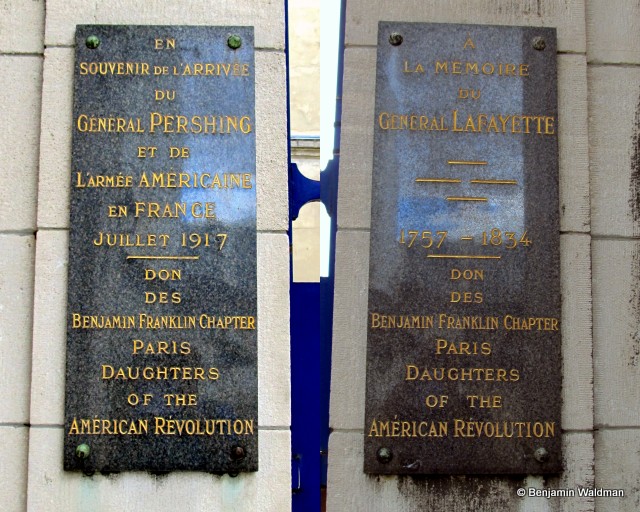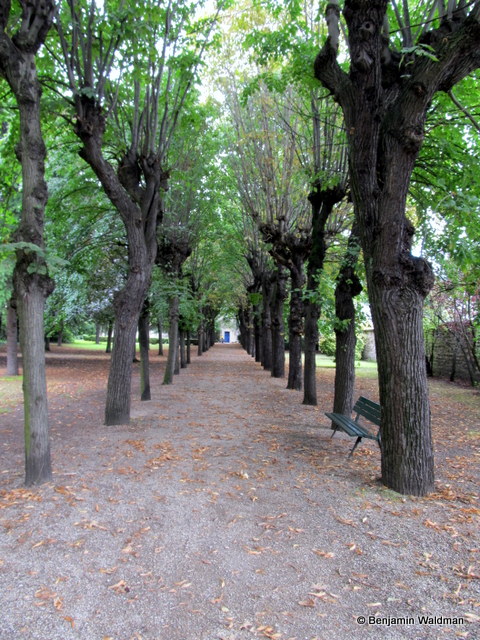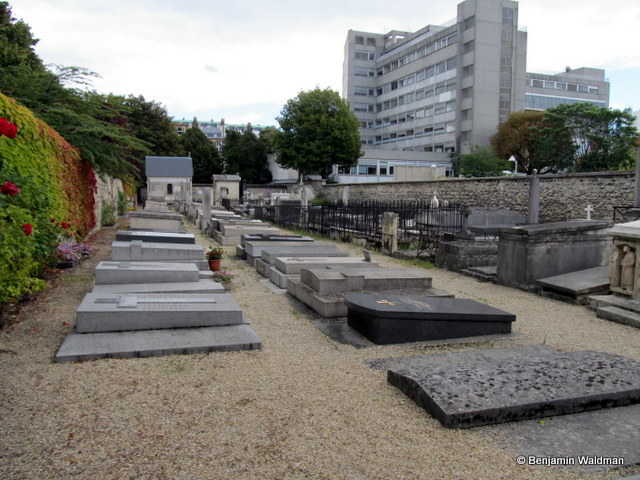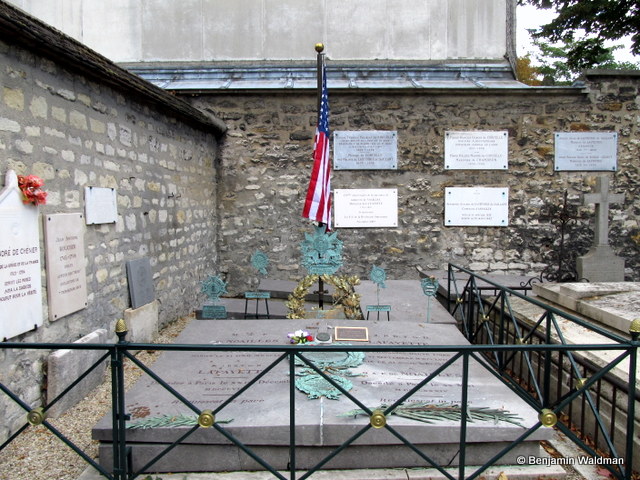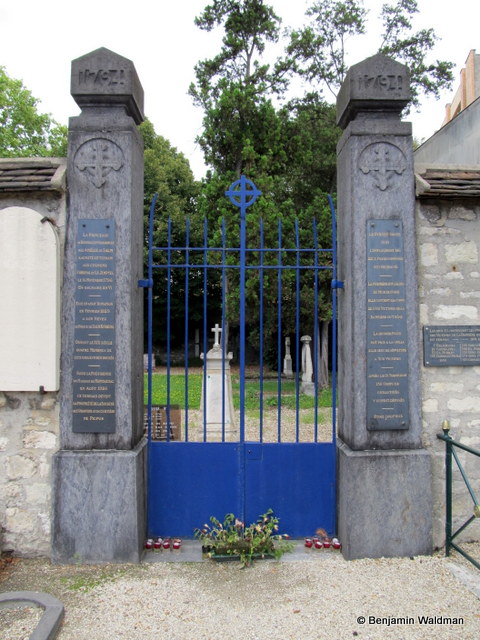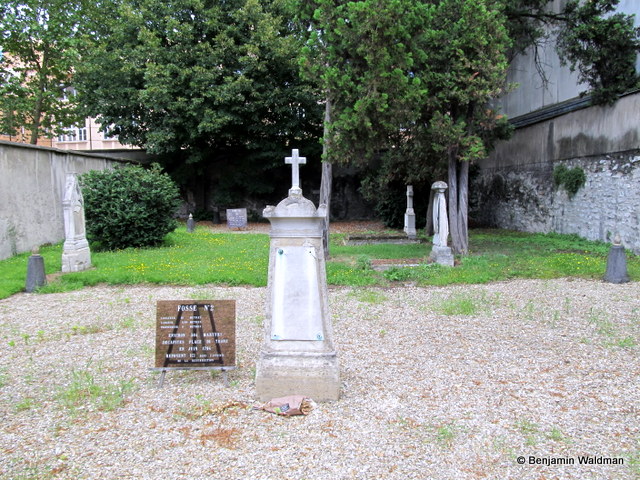The Picpus Cemetery is the largest private cemetery in Paris. The land was first used as a cemetery (noblemen who were guillotined in the area were buried in a mass grave) during the French Revolution on land seized from the Convent of the Chanoinesses de St-Augustin. In 1797, the land was acquired by Princess Amelie de Salm de Hohenzollern-Sigmaringen, whose brother, Frédéric II de Salm-Kirburg, was buried in one of the common graves, which had been created during the Revolution. The rest of the land on which the cemetery now sits was purchased in 1803. It contains the remains of many victims of the French Revolution as well as those of Marquis de Lafayette.
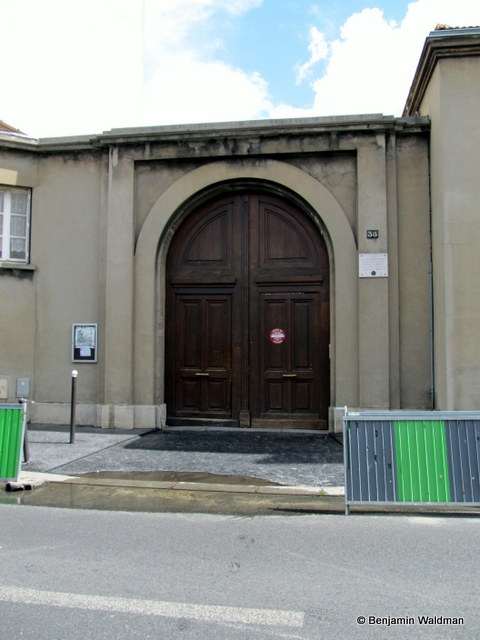
It is located away from Paris’ crowded city center near the Place de la Nation. From the street, all one is able to see of 35, Rue de Picpus is nondescript wall and wooden door.
Behind the door lies a small complex of buildings and a chapel.
To the right of the chapel is a blue gate next to which are two plaques commemorating General Pershing’s visit to the cemetery in 1917.
On the other side of the gate lies a small wooded and landscaped area.
To the right of this natural oasis, behind an ivy covered wall, lies the cemetery itself.
In the far right corner the Marquis de Lafayette is buried. His grave is watched over by an American Flag, which the Nazis allegedly didn’t remove, and numerous plaques and medals. He was buried with dirt from Bunker Hill (or Mount Vernon depending on the story) as per his request. Lafayette was buried in this cemetery because some of his wife’s relatives were killed during the revolution (a prerequisite to being buried in the cemetery is is having a family member who was guillotined during the summer of 1794).
Past Lafayette’s grave, behind another blue gate, lie the common graves from the Revolution.






